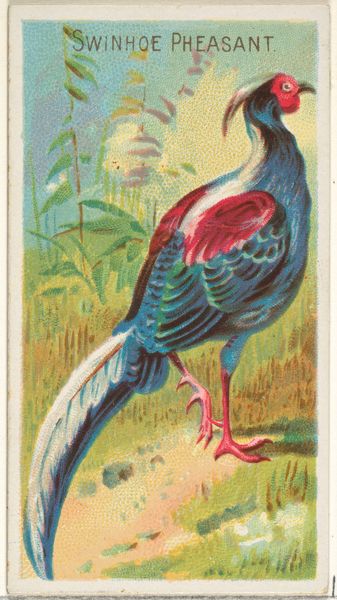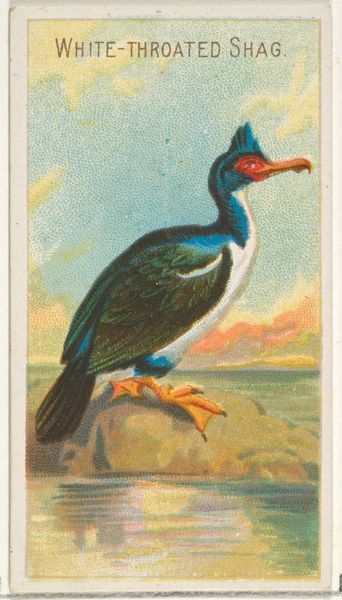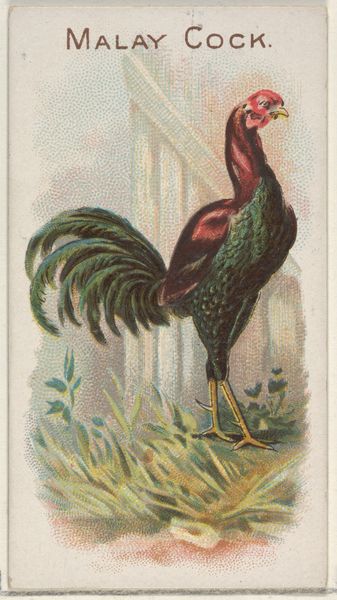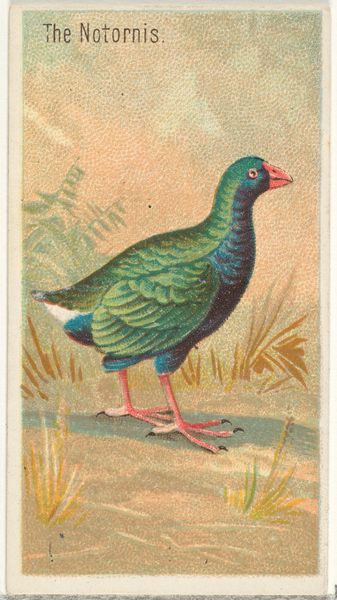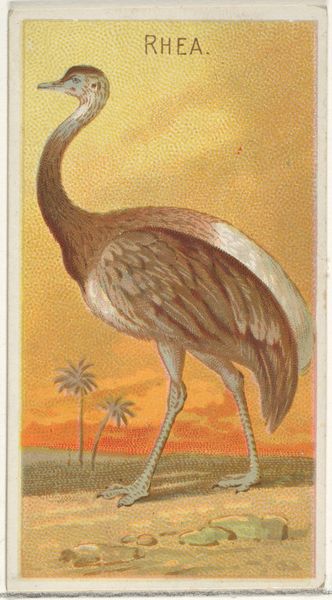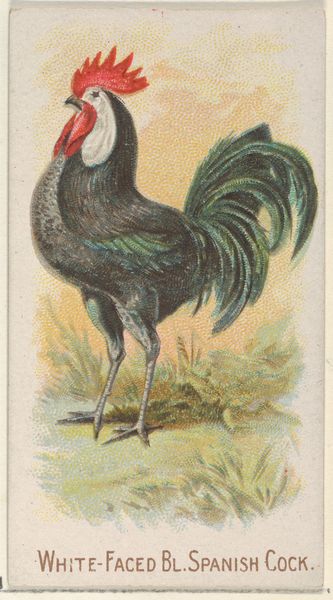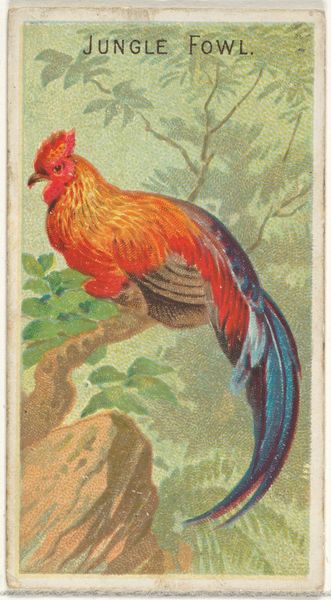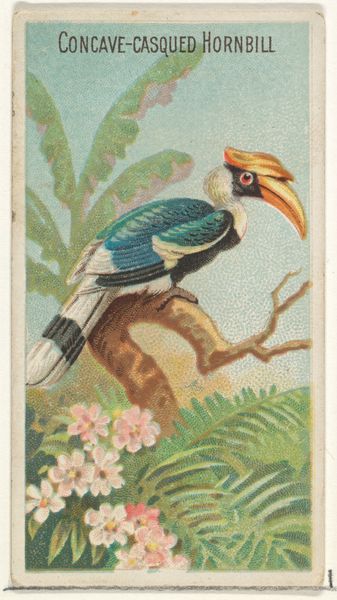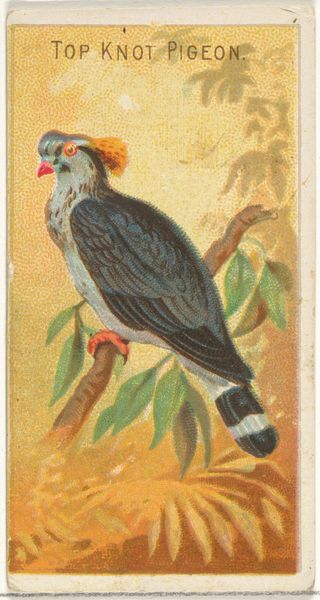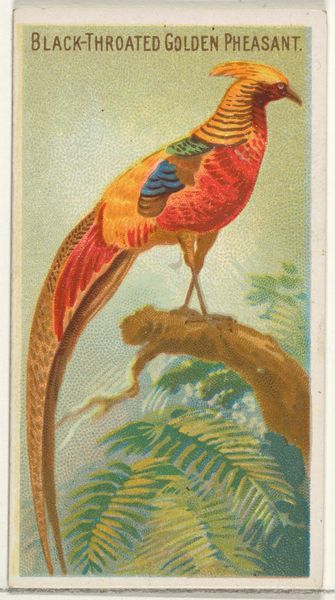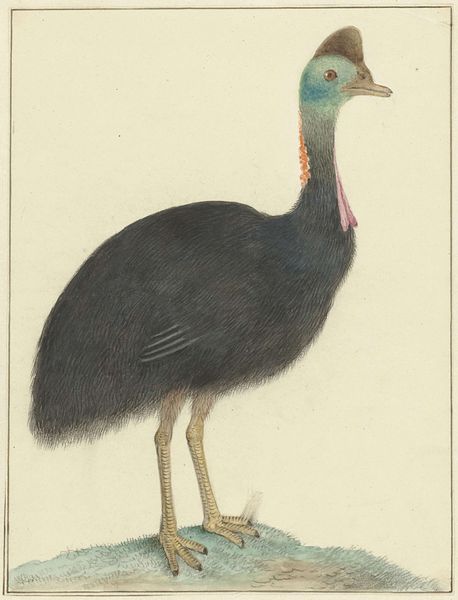
Cassowary, from the Birds of the Tropics series (N5) for Allen & Ginter Cigarettes Brands 1889
0:00
0:00
Dimensions: Sheet: 2 3/4 x 1 1/2 in. (7 x 3.8 cm)
Copyright: Public Domain
Editor: So this is "Cassowary," a print from the "Birds of the Tropics" series by Allen & Ginter, dating back to 1889. It feels…staged, almost like a portrait of a very serious bird. How do you interpret this work within its historical context? Curator: Well, let’s consider what a cigarette card depicting a cassowary *meant* in 1889. We’re in an era of intense colonialism and burgeoning consumer culture. This card isn't just an image of a bird; it's a collectible, a token representing exoticism and control. The vibrant colours and detailed rendering present a seemingly "accurate" depiction of the natural world, but accuracy for what purpose? Editor: To sell cigarettes, obviously. But it seems like there's more to it. The artist seems to be imitating Ukiyo-e, or Japanese woodblock printing, right? What could be the implications of this decision? Curator: Precisely. The borrowing of Ukiyo-e, also popular at the time, flattens the image, rendering the cassowary a design element as much as a zoological specimen. In the hands of Allen & Ginter, this becomes a way of domesticating the exotic through a visual language associated with "high" art and trade. Where does the cassowary’s voice fit into this picture? What part does indigenous knowledge play? More often than not it is silent and erased. This visual "flattening" mirrors a flattening of cultural perspectives, reducing the bird and its origins to a consumable image. Editor: So it’s less about appreciating the bird and more about celebrating colonial reach and commodification of nature. A somewhat melancholic observation… Curator: Indeed, a melancholic one. It prompts us to consider whose stories are told and, crucially, whose are omitted. It reminds us to interrogate the power dynamics inherent in representation. Editor: That gives me a lot to think about. I initially saw a pretty picture, but it’s so much more loaded than that! Curator: Exactly. And that is where art history comes into its own—it is a critical practice!
Comments
No comments
Be the first to comment and join the conversation on the ultimate creative platform.
